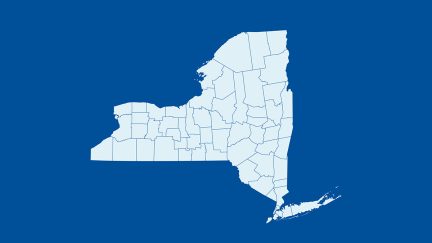Get more! Sign up for PLANSPONSOR newsletters.
OregonSaves Filling the Retirement Plan Coverage Gap
The state-run retirement program for private-sector employees is reporting $25 million saved for retirement, and has announced expansion to more employer types.
Two years after its launch, OregonSaves, the state-run retirement program for private-sector employees, is reporting $25 million saved for retirement.
OregonSaves, a state facilitated payroll deduction individual retirement account (IRA) program, is the first program of its kind in the nation to launch. It is now leading a national movement, with five states and two cities following Oregon’s lead in creating programs that respond to the growing retirement savings crisis.
OregonSaves began with a pilot program in July 2017 and is expanding statewide in waves, having started with the largest employers. Right now, the rollout is ongoing for those with 10 or more employees and enrollment for all employers is set to conclude in 2020. Employers of any size can enroll early, and nearly 2,000 have already chosen to do so.
Kasey Krifka, engagement director of the Oregon Savings Network, with the Oregon State Treasury, tells PLANSPONSOR she is not aware of any employers dropping a retirement plan they sponsored to participate in OregonSaves—though the state is not formally tracking such information. She believes such a situation is unlikely, because employer-sponsored programs often offer employer match contributions and higher contribution limits. “Employers generally establish employer sponsored plans to allow people to save more than they can in an IRA and to attract and retain quality employees. They are not likely to risk creating an employee morale problem by replacing their employer sponsored retirement plan with a payroll deduction IRA program,” she says.
She cites surveys conducted by Pew Charitable Trusts and the State of Connecticut. These found 90% and 99% of employers, respectively, said they would maintain their current plan rather than terminate it in favor of a state facilitated payroll deduction IRA program.
Krifka adds that state-facilitated payroll deduction IRA programs such as OregonSaves have been designed for employers that do not sponsor their own retirement plan. They are a simple, no-cost alternative that allows employees to save for retirement through payroll deduction until their employers are able to take on the additional administrative complexity and higher costs of employer sponsored plans. “Essentially, not every employer has the resources to provide their own retirement plan,” she says.
OregonSaves has demonstrated success by a number of measures, with more than seven in 10 workers electing to stay in the program; workers saving at a higher percentage of pay than anticipated (an average of $117 per month); and millions of dollars saved by workers who were not saving before. In fact, program assets are currently climbing by more than $2.5 million a month (a rate which continues to accelerate), and most of those contributing are first-time savers.
While seven in 10 choosing to stay in the plan is good, it is lower than the figures for auto-enrollment in Employee Retirement Income Security Act (ERISA) 401(k)s or 403(b)s. But, Krifka says the opt-out rates are right on track with original projections. Boston College’s feasibility study projected a 20% to 30% opt-out rate; the revised number one year into the program was 30%.
“Our expectations for OregonSaves revolve around reaching those who are falling in the [coverage] gap and achieving long-term sustainability for the program. Despite the fact that OregonSaves is still in its early stages and is continuing to roll out, saving is already happening in our target population and the program became self-sustaining this year,” she notes. “The bottom line is that significant numbers of Oregonians now have access to a payroll-deduction retirement savings program when they were not given access to a payroll-based program before. Those workers are now saving for their retirement at an average rate of $119 per month. And the data shows those employees are accepting the auto-enroll, auto-increase features, even given simple ways to opt-out or make changes if they want.”
In another first, OregonSaves began welcoming cannabis businesses and their employees into the program in February 2019, a move toward inclusivity for an industry that has typically been excluded from other programs and benefits. The state’s goal is to help ensure all Oregonians have a chance to be in control of their financial future.
Late last year, OregonSaves made public that the program is now open to everyone, including the self-employed and gig economy workers. Hundreds of people have self-enrolled since that option was made available, joining the ranks of the more than 100,000 employees that have already enrolled through a facilitating employer and are saving for their future retirement needs.
Asked what she would say to other states and cities implementing or considering implementing such a program, Krifka says, “OregonSaves is achieving the exact policy goals for which it was created. Millions of dollars are being saved by people who haven’t saved before—and likely wouldn’t in the future without the program. This success has long-term positive implications for the savers and for the state as a whole.”
She reiterates that OregonSaves became self-sustaining in July 2019, years sooner than initially planned, which means the state of Oregon and the people of Oregon are benefitting from an important program at less cost than initially projected, and with no additional loans or general fund support.
“As the number of savers increases and their assets compound, individual financial security will be enhanced while demand for state services will be reduced,” Krifka adds.You Might Also Like:
New York Employers Next Up for ‘Secure Choice’
From Auto-IRAs to PEPs: How Small Employers Can Offer Retirement Savings
Illinois Secure Choice Board Approves Investment Policy Statement
« (b)lines Ask the Experts – Why Are Annuities So Prevalent in 403(b)s?


